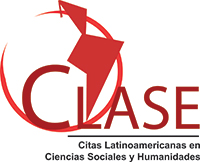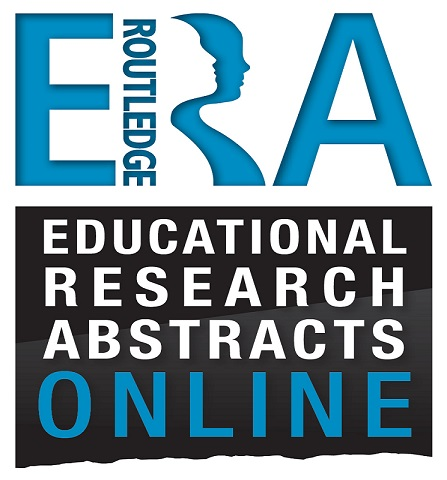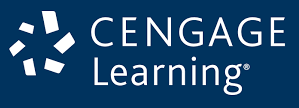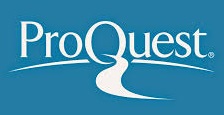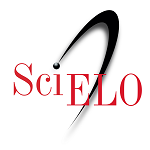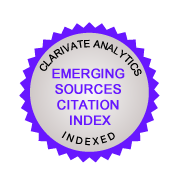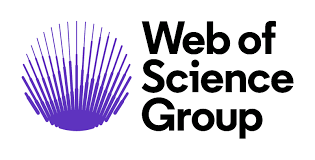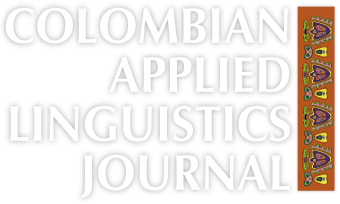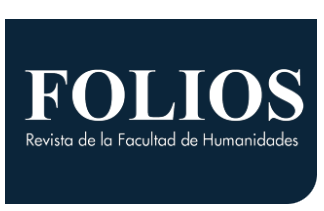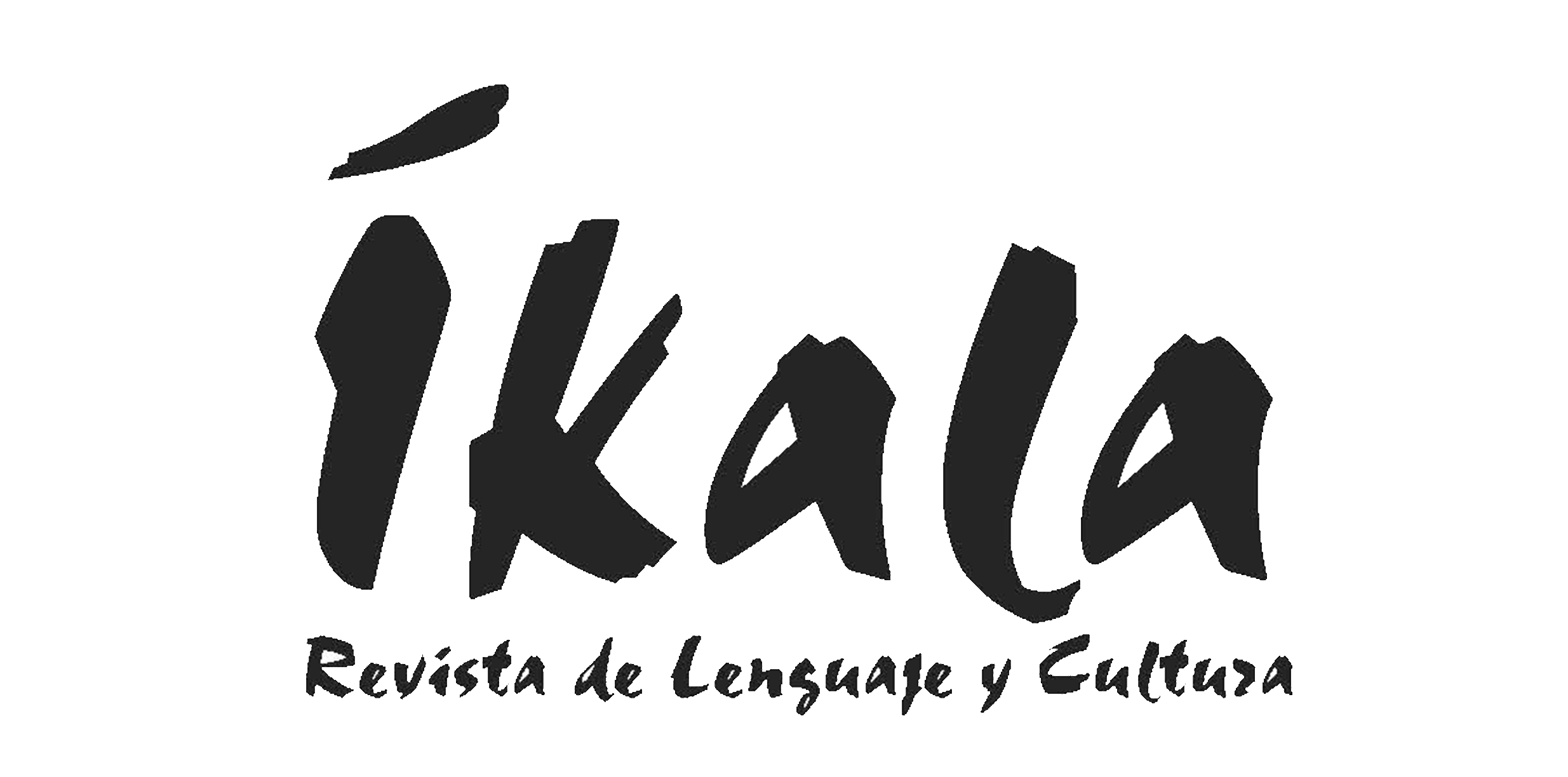Exploring Reflective Teaching through Informed Journal Keeping and Blog Group Discussion in the Teaching Practicum
Exploración de la enseñanza reflexiva en la práctica docente a través de la escritura informada de diarios y de discusiones grupales mediante blogs
Keywords:
Teaching practicum, reflective teaching, informed diary keeping, group discussions. (en)Práctica docente, enseñanza reflexiva, escritura informada de diarios, discusiones a través de blogs (es)
This article reports the findings of a study which examined how student teachers could be empowered as more reflective practitioners through journal keeping and blog group discussions. It was carried out with six student teachers who developed their practicum over six months. Data were collected through journals, blogs, metaphors, conferences and a questionnaire. The results demonstrated that student teachers enriched their perceptions about what reflective teaching implied. Furthermore, journal keeping was approached as an informed process by virtue of which student-teachers could go beyond the descriptive documentation of what happened in their classes. Their journal entries also revealed reflective references, most of which were mainly focused on evaluating teaching, diagnosing and solving problems.
Este artículo reporta los resultados de un estudio que examinó cómo se podía potenciar los practicantes como docentes más reflexivos a través del uso de diarios y discusiones mediante blogs. En el estudio participaron seis practicantes, quienes desarrollaron sus prácticas durante seis meses. Los datos se recogieron a través de diarios, blogs, metáforas, conferencias y cuestionarios. Los resultados demostraron que los practicantes enriquecieron sus percepciones acerca de lo que significa la enseñanza reflexiva. Por otra parte, el diligenciamiento del diario, el cual se hizo como un proceso informado, les permitió ir más allá de una etapa descriptiva y enfocarse en la evaluación del proceso de enseñanza, la identificación y solución de los problemas que surgieron en la clase.
Exploring Reflective Teaching through Informed Journal Keeping
and Blog Group Discussion in the Teaching Practicum*
Exploración de la enseñanza reflexiva en la práctica docente a través
de la escritura informada de diarios y de discusiones grupales mediante blogs
Edgar Alirio Insuasty**
Lilian Cecilia Zambrano Castillo***
Universidad Surcolombiana, Colombia
**edalin@usco.edu.co
***licezam@usco.edu.co
This article was received on December 16, 2009, and accepted on June 12, 2010.
This article reports the findings of a study which examined how student teachers could be empowered as more reflective practitioners through journal keeping and blog group discussions. It was carried out with six student teachers who developed their practicum over six months. Data were collected through journals, blogs, metaphors, conferences and a questionnaire. The results demonstrated that student teachers enriched their perceptions about what reflective teaching implied. Furthermore, journal keeping was approached as an informed process by virtue of which student-teachers could go beyond the descriptive documentation of what happened in their classes. Their journal entries also revealed reflective references, most of which were mainly focused on evaluating teaching, diagnosing and solving problems.
Key words: Teaching practicum, reflective teaching, informed diary keeping, group discussions.
Este artículo reporta los resultados de un estudio que examinó cómo se podía potenciar los practicantes como docentes más reflexivos a través del uso de diarios y discusiones mediante blogs. En el estudio participaron seis practicantes, quienes desarrollaron sus prácticas durante seis meses. Los datos se recogieron a través de diarios, blogs, metáforas, conferencias y cuestionarios. Los resultados demostraron que los practicantes enriquecieron sus percepciones acerca de lo que significa la enseñanza reflexiva. Por otra parte, el diligenciamiento del diario, el cual se hizo como un proceso informado, les permitió ir más allá de una etapa descriptiva y enfocarse en la evaluación del proceso de enseñanza, la identificación y solución de los problemas que surgieron en la clase.
Palabras clave: práctica docente, enseñanza reflexiva, escritura informada de diarios, discusiones a través de blogs.
Introduction
Reflection should be a basic component of teacher development because pre-service and in-service teachers are called to evaluate and rearrange their teaching in order to optimize the teaching-learning process. A reflective teacher is expected to go beyond the practice of reciting textbooks, giving tests, following imposed syllabi, and taking for granted that everything is going well. Teachers are supposed to become critical of their own practices in order to make their students' learning experience something dynamic, valuable and meaningful for their lives. In spite of the importance that reflective teaching involves, the potential of reflection in the Colombian educational context has not been fully explored.
Zambrano and Insuasty (2008) carried out a small-scale descriptive study which sought to investigate the extent to which the teaching practicum in the foreign language program of a public university had been approached as a reflective experience. The teaching practicum component of this program was found to have fallen short in providing student teachers with opportunities to develop into reflective practitioners, despite the existing institutional regulations in that sense. In general terms, student teachers did not seem to be aware enough of the principles of reflective teaching and, consequently, were not committed to implementing this approach.
The researcher's professional response to the student teachers' low level of reflectivity was the conception and implementation of a Reflective Teaching Intervention Proposal (RTIP), which was framed and explored in the practicum supervisory relationship between six student teachers and the two researchers. The initial plan consisted of seven induction workshops. They were aimed at broadening student teachers' insights into reflective teaching, its main purposes, and reflective teaching tools. In addition to these conceptual foundations on reflective teaching, student teachers were asked to keep a journal and to participate in group blog discussions throughout the practicum period.
The present study sought to develop the following objectives: (a) to determine the type of perceptions student teachers had about reflective teaching, (b) to broaden student teachers' insights into reflective teaching, (c) to stimulate student teachers to explore reflective teaching tools during the practicum experience, and (d) to ascertain to what extent student teachers became reflective practitioners. The next sessions of this article will discuss the basic concepts of reflective teaching, its rationale as well as two implementation frameworks. Moreover, the major findings of three similar studies will be added. Then, the research methodology will be depicted. Finally, the results, findings and conclusions will be discussed.
Theoretical Framework
In general terms, reflection has been described in many ways. Koszalka, Song, and Grabrowski (2002, as cited in Conderman & Morin, 2004) defined reflection as "active, persistent, and careful consideration of any belief or practice" (p. 111). In order for reflection to evolve in meaning and usefulness, Rodgers (2002, as cited in Amobi, 2006) suggests that "reflection should be taught, learnt, assessed, discussed, and researched" (p. 26).
As to the conceptions of reflection in the educational field, there is also a wide range of standpoints. According to Ross (1989), reflection is "a way of thinking about educational matters that involves the ability to make rational choices and to assume responsibility for those choices" (p. 22). Likewise, Bartlett (1994) contends that reflection is more than thinking and focuses on the day-to-day classroom teaching of the individual teacher as well as the institutional structures in which the teacher and students work.
Bartlett (1994) also says that "becoming critical means that as teachers we have to transcend the technicalities of teaching and think beyond the need to improve our instructional techniques" (p. 203). He suggests that we should move away from the "how to" question to the "what and why" questions because they give us some power over our teaching, and in this way we can begin to exercise control and open up the possibility of transforming our everyday classroom life. Bartlett (1994) claims that reflective teaching should be seen as "a form of critical inquiry located in a socially critical orientation to teaching" (p. 203). Thus, second language teachers should assume that they are both the producers and creators of their own history.
Risko, Roskos, and Vukelich (2002, as cited in Conderman & Morin, 2004) believe that reflection creates the foundation for assessing situations and making rational decisions and provides educators the opportunity to generate connections between theory and practice, to come to deeper understandings about their personal beliefs while adapting new perspectives, and to use inquiry to inform instructional decisions.
Richards (1990, as cited in Farrell, 2003) also sees reflection as a key component of teacher development. He defines critical reflection as a process in which "experience is recalled, considered, and evaluated, usually in relation to a broader purpose" (p. 15). He also argues that this process is a basis for evaluation, decision making and a source for planning and action.
According to Schön (1983, as cited in Corcoran & Leahy, 2003), reflection requires a public testing of private assumptions, which happens through a dialogue of words or actions with other participants in the teaching-learning context. In this sense, Kemmis (1986, as cited in Bartlett, 1994) contends that:
reflection is not just an individual, psychological process. It is an action oriented, historically-embedded social and political frame, to locate oneself in the history of a situation, to partici pate in a social activity, and to take sides on issues. Moreover the material on which reflection works is given to us socially and historically; through reflection and the action which it informs, we may transform the social relations which characterize our work and our working situation. (p. 204)
In order to comply with the requirements of reflective teaching development, teachers can have access to a variety of resources such as the ones presented by Murphy (2001). They include audio or video recording, class observation, interviews, journal keeping, focus groups, etc.
Why Reflective Teaching?
Reflective teaching is an approach which has gained significant momentum in language teaching. In his personal reflection about thirty years of TEFL/TESL, Richards (2008) contends that language teachers have moved away from a search of the perfect method and have shifted their attention to developing and exploring their own teaching through reflective teaching and action research.
Other theorists have, over the last few years, advocated different rationales for the emergence and the worthiness of reflective teaching. Gore (1987) enhances collegiality as one of the outcomes of reflective teaching, since via working in small groups to question and examine teaching behavior and provide honest feedback, students may develop trust and respect for each other as teachers and professionals. According to Smyth (1992), reflection places an emphasis on learning through questioning and investigation in order to lead to a development of understanding. As a matter of fact, exploring the nature of reflective practice, Calderhead (1993) and others found that reflective teaching contributes to professional development by encouraging teachers to analyze, discuss, and evaluate practice. From a constructivist point of view, Colton and Sparks-Langer (1993) contend that teachers are expected to learn from their experiences by constructing mental representations of their personal meanings when they are stored in memory to be revised as experience dictates. Ferraro (2008) also perceived that teachers could improve their effectiveness in the classroom by gaining a better understanding of their own individual teaching styles through reflective practice.
Murphy (2001) points out that teachers can grow as professionals in different ways and this growth lets them look inward, both within themselves and within the courses they offer, to access information about what happens in their language classrooms. He proposes three main purposes of reflective teaching: First, to expand one's understanding of the teaching learning process; second, to expand one's repertoire of strategic options as a language teacher; and third, to enhance the quality of learning opportunities one is able to provide in language classrooms (pp. 499-514).
Frameworks to Develop Reflective Teaching
Reflective teaching has been conceived by different scholars as a cyclical process of teacher development. Bartlett (1994) proposes a cycle for the process of reflective teaching. It is made of five components, namely, mapping, informing, contesting, appraising, and acting, which are not linear or sequential. Each one of these elements is a response to a particular question, as shown here:
Mapping. (What do I do as a teacher?) For Bartlett it implies observation and the collection of evidence about our experiences in the classroom. This stage also involves asking questions about what we do as teachers. What is very important in the mapping phase is that observation must be done by individual teachers (and through the use of personal diaries, learning logs, portfolios, and journals). The teachers' approach to the mapping phase should be a descriptive one.
Informing. (What isthe meaning ofmyteaching? What did I intend?) "It is looking for meaning behind the maps" (Bartlett, 1994, p. 210). That is, the teacher revisits his first records -his maps -adds to them, and makes sense of them. As such, the informing phase provides the teacher with an understanding of the difference between teaching routine and conscious teaching action, and the ability to unearth the principles behind them as well as reasons underlying one's own theory of teaching.
Contesting. (How did I come to be this way? How was it possible for my present view of teaching to have emerged?) "This phase involves contesting our ideas and the structures that hold them in place" (Bartlett, 1994, p. 211). To this end, teachers can share their understandings and reasons for teaching in particular ways with their colleagues. While becoming experienced teachers, they develop their own theories of teaching and learning and their professional histories which contain assumptions about the best ways of teaching.
Appraisal. (How might I teach differently?) It has to do with a search for alternative courses of action. "Appraisal begins to link the thinking dimension of reflection with the search for teaching in ways consistent with our new understanding" (Bartlett, 1994, p. 213). Appraisal is a quest for alternative courses of action; that is, emerging plans or strategies to enhance the quality of teaching and learning processes.
Acting. (What and how shall I now teach?) It is concerned with implementing those emerging teaching plans. Freire, as cited by Bartlett (1994), states that "reflection without action is verbalism, and action without reflection is activism" (p. 213).
To sum up, what is expected with this cycle, according to Bartlett, is that "We rearrange our teaching practice after mapping what we do, unearthing the reasons and assumption for these actions, subjecting these reasons to critical scrutiny, appraising alternative courses of action, and then acting" (1994, p. 213).
Murphy (2001) suggests the following steps for those teachers who are interested in deepening awareness of their teaching and learning behaviors through reflective teaching:
(a) Gather information on whatever is taking place within a language course, (b) examine such information closely in an effort to better understand what they collect, (c) identify anything puz zling about the teaching-learning process, (d) build awareness and deepen understanding of current teaching and learning be haviors, (e) locate and collaborate with others interested in pro cesses of reflective teaching, (f) pose and refine questions tied to one's teaching that are worth further exploration, (g) locate resources that may help to clarify whatever questions are be ing posed, (h) make informed changes in teaching, even if only modest changes, (i) document changes in teaching-learning be haviors and responses, (j) continue such efforts over time and share emerging insights with others. (p. 500)
In addition to the theoretical foundations we have just briefly described, this study has also been informed by other research-derived insights. Chacón (2008) conducted an investigation with the Practicum student teachers at the University of Los Andes-Táchira. Findings showed that intervention helped improve student teachers' competencies to reflect because it fostered reflection-in-practice and reflection-on-practice. Ho and Richards (2008) carried out a study aimed at investigating how journal writing promoted reflective thinking. They concluded that "journal writing can provide an opportunity for teachers to write reflectively about teaching, though in itself does not necessarily promote critical reflection... some initial training in reflective writing may well be necessary as a preparation for journal writing" (p. 13). Muñoz, Quintero and Munévar (2008) carried out collaborative action research which was aimed at enriching the potential of young educators in the teacher training schools with the concept and practice of pedagogical research. The major finding was that teacher trainees could improve their research abilities while learning to teach.
These studies are relevant to our research since all of them are concerned with improving reflective teaching practice from different perspectives. The study conducted by Muñoz, Quintero and Munévar (2008) proves that the practicum can be a propitious arena to promote reflection and research competences. The study by Chacón (2008) supported our initiative of intervening in the practicum by encouraging student teachers to reflect upon their teaching practicum. On its part, Ho and Richards's study (2008) was valuable because it provided us with procedural insights on how to categorize the descriptive and reflective references found in the student teachers' journals. On the other hand, they recommended taking into account diary keeping as an informed process.
Methodology
This research study was framed within the category of Curriculum Action Research since it abides by the main objectives and procedures of this research design. In his introduction to McKernan's book (1996), Elliot suggests that "the aim of doing action research as a teacher is to achieve educationally worthwhile changes, and at the heart of this enterprise are considerations of curriculum and pedagogy". As a matter of fact, what is sought with this research proposal is to start intervening one of the major curricular components of the foreign language program: the teaching practicum. The study also had other defining features of action research such as being small-scale, localized, and aimed at discovering, developing, or monitoring changes to practice (Wallace, 2000).
Observational and non-observational techniques were used to collect data. The former were journals, blog group discussions and conferences. The latter were metaphors and questionnaires. Journal entries were done in terms of description, interpretation, intervention points, action plans and follow-up. Blog group discussion was done by means of the postings and feedback of student teachers and supervisors in their own blogs. Student teachers and their practicum supervisors also held a group and individual conference as a way to exchange their impressions about the Reflective Teaching Intervention Proposal (RTIP) process. As to the non-observational techniques, student teachers were administered three questionnaires aimed at determining student teachers' perceptions about reflective teaching and its importance and at capturing student teachers' perceptions about the impact of the reflective teaching insights and practical tools they explored throughout their teaching practicum experience. Furthermore, student teachers individually drew two metaphors, an initial one which would represent them as prospective teachers and a final one which would represent them as reflective practitioners. The main purpose of this task was to find out which were the insights and beliefs they held about the teaching learning process and to assess their initial and post-intervention perceptions on reflective teaching based on the descriptions they made of their metaphors. They made different kinds of representations. For example, Student-teacher 3 drew a teacher and his students outside the classroom, surrounded by nature and statues like the ones we could see in the San Agustin archeological park in his first metaphor and in his second metaphor he included many details to explain his preceptions about his experience during the practicum (see Appendixes 1 and 2).
This Action Research Spiral (ARS) consisted of two cycles, each one of which involved four stages:
(1) designing an intervention plan aimed at improving the practicum based on reflective teaching, (2) implementing the intervention plan, (3) observing and completing a follow-up, and (4) reflecting. Once the data gathered in the first cycle were analyzed, the initial plan was revised and adjusted as the point of departure for the second cycle.
In general terms, data analysis followed the stages outlined by McKernan (1996): "First, processing the evidence, editing and coding. Second, mapping the data by noting the frequency of recurrence of issues, themes and units. Third, making the interpretation of data/model building. Fourth, presenting of results, reporting evidence" (pp. 223-227).
Content analysis was specifically conducted in accordance with the procedures suggested by McKernan (1996): "First, defining the universe of the content. Second, writing careful definitions of key categories being coded. Third, analyzing the data and coding categories. Fourth, quantifying and doing counts" (p. 147).
Results
The implementation of the RTIP resulted in an enhancement of the student teachers' initial perceptions about reflective teaching and in an ongoing improvement of their reflectivity through informed journal keeping and blog group discussions. An overview of the most relevant conceptual and practical gains student teachers experienced throughout the two cycles is presented here by tracing the initial assumptions student teachers had about reflective teaching, documenting the ongoing development of their reflectivity and presenting their informed notions of reflective teaching.
In order to ensure the confidentiality of the six participants, they are identified in this report as Student-teacher 1 (ST1), Student-teacher 2 (ST2), and so on.
Baseline Perceptions of Student Teachers about Reflective Teaching
As an explanation of their initial metaphors, student teachers depicted various roles such as being a controller, a guide or innovator they would play in their future profession. However, none of them disclosed any relevant features which would shape a reflective practitioner. They did not see themselves as researchers, critical analysts of their own teaching practice, neither did they see teaching as a process where experience should be documented, evaluated and whose results are used to make informed decisions, to implement changes and so to be able to rearrange teaching objectively.
In addition to metaphor development, student teachers were administered a questionnaire aimed at finding out their previous knowledge about reflective teaching. As a response, student teachers stated a wide range of diverse but discrete perceptions. For example, ST2 pointed out that "reflective teaching is a way of improving the learning process". ST4 answered that "It allows teachers to self-evaluate and improve weaknesses". ST3 and ST5 asserted that "the main purpose of reflective teaching is to identify and solve problems in different ways". Some of them also wrote some references which did not evidence traits of reflectivity as pursued by reflective teaching. For instance, ST1 pointed out that reflective teaching is useful "to teach students not to memorize grammar structures, but to teach how to live in a changing world"; ST3 claimed that "it is a model where a student teacher puts into practice all the psychological knowledge".
Reflectivity Development as Evidenced by Informed Journal Keeping
One of the major components of the RTIP was informed journal keeping. After having been provided with insights into reflective teaching and reflective journal keeping, student teachers wrote journal entries about their practicum experiences. At the end of the two cycles, 72 of those journal entries were analyzed and coded according to the categories and subcategories presented by Ho and Richards (2008) and adapted by the researchers. Table 1 shows that 435 out of a total of 576 analyzed references were classified as reflective and 141 as non-reflective.
In general terms, Table 1 reveals that the most recurrent issues student teachers wrote about were concerned with evaluating teaching (312 out of 576 analyzed references). Most of the references deal with positive or negative evaluation of lessons, students or teachers' problems and problems within the school context.
In some of the references student teachers let us see their willingness to evaluate their lessons either in a positive or negative way. They highlighed the good results they had achieved or they showed previously identified problems concerned with the learner, the teacher or the institutional context, as shown in the following examples:
The repetition and labeling of the parts helped my students to identify the vocabulary little by little. Once again, this demon strated the usefulness of the Natural Approach, specially the production stage-by-stage process used to write more elabo rated sentences. (ST2)
Through references like this one student teachers showed they did not limit themselves to just describing what they did in the classroom, as happened before the intervention proposal. ST2 went beyond narrating her experience; she determined what worked well and made a contrast between what the theorists state and the actual results in the classroom. In so doing, student teachers become more reflective because as Bartlett (1994) points out: "they begin the search for principles or reasons which are the basis for their theory of teaching" (p. 210). They also became a little aware of the value of making informed decisions in their teaching experience in order to facilitate their students' learning process.
Another way of evaluating their lessons was focused on diagnosing problems concerned with students, the institutional context and the student teachers themselves. Although some of the student teachers argued that they were initially afraid of getting lower grades if they wrote down all the difficulties they had during the class, they finally learned to be more self-critical of their own performance and identified their own weaknesses as we can see in the following testimonies1:
I know it was a little terrible because they wanted to work in groups, but they couldn't stay in a specific place, and they were very noisy. It was stressful; I had to call their attention several times. Sometimes I didn't know what to do. (ST2) The mistake I made when preparing the guide they had to color, cut and at last classify was to have students color the drawings. I should have colored the drawings myself and stuck the colored drawings in order for them to cut and classify. Due to the fact stu dents had to do all of these activities, we were short of time. (ST6) It has been so difficult to find some actions to solve this problem. If I speak loudly or shout it hurts my sore throat. If I am indiffer ent, they continue in the same behavior. (ST1)
Student teachers not only diagnosed problems, but also proposed some alternative ways of solving them, as can be seen in the following examples:
When I noticed this fact, I proceeded to explain it in an easier way using Spanish to make the topic clearer for them. (ST6) In order to clear up the students' doubts, I walked around the classroom checking what they were doing and giving personal explanations. (ST5)
These courses of action proposed by ST6 and ST5 also stem from their reflective teaching attitude. Even though they did not explicitly provide any theoretical support when proposing the strategies to overcome the above mentioned difficulties, the researchers could infer the tenets underlying their plans. In the first reference, the student teacher's decision was based on the premise that learners can sometimes benefit from the use of their native language, especially when some grammatical components must be explained. Finocchiaro and Brumfit (cited by Richards & Rodgers, 2001) point out that "Judicious use of native language is accepted where feasible" (p. 156). In the second reference, the student teacher lets us see that he is applying one of the teachers' roles Harmer (2007) proposes, the teacher as a tutor, where he can go around the class and stay briefly with a particular group or individual and offer some guidance.
The second most frequent concern of student teachers in their journal entries was framed within the category "approaches and methods", as can be seen in Table 1. 124 out of 578 references were registered in this category. However, most of these were concerned with describing the content of a lesson without suggesting explicitly the type of approach or method which supports their practice. In spite of having taken courses during their career where student teachers deeply analyzed different approaches and methods for language teaching, they did not confront the theoretical foundations that supported their performance with what actually happened in the classroom. For example: "The class started with a review of what was seen in the previous lesson... After, a game where a student had to pass a kind of capsule was played... Next, the same was done but with background music..." (ST6).
However, this type of practice made student teachers aware of the importance of collecting evidence about their own teaching. Regarding this, Bartlett (1994) claims that "In writing, we begin not only to observe, but we take the first step in reflecting on and about our practice... The aim is to raise your consciousness of your teaching through writing: This is the first step to "sussing out" the meaning behind your ideas" (p. 210).
As can be seen, this type of reference corresponds to the mapping phase of Bartlett's Reflective Cycle which does not involve the teacher in critical reflection, since s/he just gives an account of what goes on in her/his practicum lessons.
The third most important issue student teachers wrote about was theories of teaching. In this category, they wrote descriptive references aimed at expressing a belief or conviction or an expert's view: "During this school term, there were some children who didn't get a satisfactory academic performance; however, I cannot give a mark of poor performance ("I") to a preschool child" (ST2).
As can be seen in the reference, the student teacher did not justify her decision of not assigning a bad grade to a pre-school student.
In the category of theories of teaching, other references were focused on more reflective actions such as expressing a justification for something or expressing an opinion shaped by experience. For example:
The children seemed to be motivated when they were asked to perform commands and it was, to a large extent, due to the fact that it implied movement. I realized that Juan (pseudonym) who does not usually participate in class was very interested in per forming commands. This confirms what the TPR method pos tulates: Giving a physical response to commands makes students move and this turns to be appealing to children. (ST6)
Through this reference we can perceive that the student teacher conciliates theory and practice. She confirmed the effectiveness of that theoretical assumption proposed by Asher (1977). "This phase in reflective teaching begins the search for principles that underlie our teaching, the search for reasons which are the basis for our theory of teaching" (Bartlett, 1994, p. 211). It is important that student teachers become aware of their teaching actions, confront them with what theorists propose and try to create their own teory of teaching and learning based on the specific context where they teach. "Maybe the students' good attitude was due to the fact that they had heard the song in their native language" (ST2).
English songs can be a very useful resource to promote language development. With this particular reference, ST2 is posing the worthy hypothesis that the choice of a particular song made by taking into account the students' previous familiarity with it can impinge on their attitude. "I worked with flashcards to introduce professions... Pictures help so much students to learn and catch easily" (ST1).
This seems to be an obvious statement likely to be found in ELT literature. However, it is in this case the voice of a student teacher who has reflected on his/her experience of using pictures and who has derived a meaningful lesson from this teaching strategy. As is widely known, the teacher can find students with different learning styles in a classroom -the visual style being one of the most prevalent- and it is through the use of pictures that the teacher can cater to students' learning needs.
To a lesser extent, student teachers also showed some self-awareness manifestations such as perception of their teaching style, recognition of personal growth, the setting of personal goals and recognition of weaknesses. All of these traits have been classified as reflective since they suggest a high sense of introspection on the student teachers' part. Here are some selected examples: "I always correct the mistakes through an indirect reinforcement, I stress and correct... This is a way in which the kid feels neither badly nor frustrated" (ST1).
It is important for the student teachers to be aware of the teaching style that works best for them. In this case, ST1 has grown aware, via introspection, of the need to give students constructive feedback. "Most of the mistakes I have made during my teaching experience have had to do with pronunciation for not having looked up some unknown words in advance" (ST2).
As stated in the theoretical framework, one of the characteristic features of reflective teaching is problem solving. Introspective self-examination enables student teachers to identify what needs to be improved upon. "To know that they had liked the lesson I had prepared for them made me feel proud of myself " (ST2).
A reflective practitioner should not only be concerned about spotting and solving problems, but he or she should also recognize the worth of his/her efforts to do a good job.
Finally, in the fifth category, which is concerned with asking questions about teaching, one of the student teachers (ST1) wondered what to do with her students' disruptive behavior. Another one recognizes the worth of asking for advice or suggestions, as seen in the following reference: "I have to revise the activities and ask for a second opinion to my practicum advisor or another experienced teacher" (ST2).
At the very beginning, student teachers need to be guided in their search for professional growth, so, it is important that they look for feedback opportunities which can empower them as reflective and assertive professionals.
Reflectivity Development as Evidenced by Blog Group Discussions
The initial task student teachers completed was to answer a question posted by one of the researchers concerning which beliefs about teaching and learning a foreign language they thought they were applying in their practicum classes. For the subsequent weeks, each one of the student teachers posted a problematic situation they were facing in the practicum and invited their peers to give their opinions about it. Most of their posts had to do with behavior problems in their respective courses. Most of the comments made by their practicum peers were suggestions on how to solve their difficulties. Here there is a sample of a blog posting taken from ST4.
As can be seen in this blogging example (Table 2), student teachers share their points of view about the way disruptive behavior and lack of students' self-esteem should be coped with. By doing this they are extending their own individual teaching insights. This supports the idea of teaching as interaction (Bartlett, 1994). Even though all of the six participants did not become actively engaged in blog group discussions because of time and computer literacy limitations, as expected, the merits of this kind of interaction were enhanced by the student teachers themselves.
Weblogs (or blogs) are a meaningful educational tool which can encourage reflective practice (Beale, 2007). They can create a sense of community within which participants can post their comments and read what others have written about their different classroom incidents.
Post-Intervention Perceptions of Student Teachers about Reflective Teaching
The most prevailing perceptions student teachers held about reflective teaching at the end of the RTIP process were identified by means of their final metaphors and opinions in an individual conference and a questionnaire.
At the end of the second cycle student teachers were asked to draw a second metaphor which was aimed at representing themselves as teachers after having done their teaching practicum. Moreover, we intended to see the extent to which they recognized themselves as reflective practitioners. For an illustration, turn to Appendix 2 to see ST3's second metaphor. What follows is an account of the way ST3 interpreted his own metaphor:
ST3 drew a room in which nature and the city complement each other. In this room there are different objects each of which symbolizes something relevant of the practicum process. There is, for example, a watch representing the amount of time the teaching practicum was allotted. It is also time for reflection. Time for solving problems. Time for diary-keeping. A bird, representing the students' enthusiasm and energy as well as the student teacher's. A picture where there are two people fishing, the underlying message being "Give a man a fish; you have fed him for today. Teach a man to fish; and you have fed him for a lifetime". There is also an ink pot with some drops falling on a kind of oil painting. This represents all the thoughts reflected in the journal as well as all the writing done by supervisors, practi cum peers and students. There is a window which represents the reflective thinking in the practicum. (ST3)
In the accounts student teachers gave about their own metaphors, two of them (ST3 and ST5) explicitly revealed that they had gained insights into Reflective Teaching. ST3, for example, emphasized the importance of devoting time not only to teaching the subject matter, but also to reflecting, diary-keeping and solving problems. ST5, on his part, highlighted teaching as a construction process from the teacher's reflective posture and willingness to self assess and to make necessary changes.
Even though the other student teachers did not make overt references to Reflective Teaching, they showed awareness about some of its meaningful traits such as being self critical (ST2 and ST4) and problem solving (ST1 and ST6). In addition, ST2 also seemed to favor the transition from teacher-centered to learner-centered instruction.
In the individual conference, student teachers contended that a reflective practitioner needs to be engaged in evaluating and analyzing one's teaching experience critically, doing research, identifying and solving problems, gaining insights from discussing one's teaching with others, rearranging teaching, and improving classroom process. They also reiterated the usefulness of journal keeping and blog group discussion as reflective teaching tools which enriched their practicum experience.
In the final questionnaire student teachers were administered, they matched reflective teaching with crucial issues such as evaluating, analyzing and examining one's teaching experiences critically, identifying and solving problems, and improving classroom processes.
Discussion
Throughout the RTIP implementation, student teachers demonstrated they expanded their insights into reflective teaching and adopted a more reflective and critical attitude in their practicum. Informed diary keeping and blog group discussion proved to be positive strategies for this purpose because they promoted the development of student teachers' critical thinking through writing. Bartlett (1994) claims that in writing we begin not only to observe, but take the first step in reflecting on and about our practice.
On Journal-Keeping as an Informed Process
Keeping a diary or a journal, either for pedagogic or research purposes, is a valuable experience for pre-service or in-service teachers as many scholars such as Bailey (1994) and Burns (2003) have pointed out. The present study let us state that journal-keeping can be a useful tool to empower student teachers as reflective practitioners as long as it is approached as an informed process. Writing journal entries, for its own sake, does not lead to reflectivity development. Student teachers need to be provided with some prior insights into reflective teaching and guidelines on how to frame their ideas in the journal from a reflective perspective. It is crucial to encourage them to go beyond the mere description of what goes on in class by giving a theoretical sense to classroom incidents, finding inconsistencies between one's teaching intentions and one's teaching actions, identifying things worth improving, adopting some courses of action and completing a follow-up.
At the very beginning, student teachers can be advised to follow some frameworks such as the one proposed in this study in terms of description, interpretation, intervention points, action plans and follow-up. As they gain more experience in this kind of reasoning, student teachers can use different formats for writing their journal entries.
Another aspect that makes journal keeping an informed process is the supportive feedback student teachers can be provided with by their practicum supervisors. In this respect, practicum supervisors are expected to read the student teachers' entries carefully and systematically and write back comments or questions aimed at encouraging them to be more analytic and self critical.
In keeping with Bartlett's phases of contesting and appraisal (1994), student teachers built up the association between Reflective Teaching and evaluating and analyzing one's teaching critically This particular association goes hand in hand with the way Richards (1990, as cited by Farrell, 2003) defines critical reflection as a process in which "experience is recalled, considered, and evaluated, usually in relation to a broader purpose". In the context of the practicum, this broader purpose has to do with empowering the student teachers' professional competence and improving "classroom processes and outcomes", as Pennington stated.
Another important initiative student teachers undertook was identifying and solving problems that arose in the classroom. Loughran (2002) contends that one element of reflection that is common to many is the notion of a problem (a puzzling, curious, or perplexing situation). What that problem is, the way it is framed and (hopefully) reframed, is an important aspect of understanding the nature of reflection and the value of reflective practice. In the same way, Ross strongly advocates the focus of Reflective Teaching on "an educational dilemma" and the consequent analysis, responses, framing, re-framing, experimentation, solving, assessment, and implementation to deal with the specific dilemma.
To a lesser or greater extent, student teachers got to make sense of what they did in the classroom by justifying their decisions. They sometimes found discrepancies between theory and practice and were open to share their accomplishments and difficulties with their practicum peers and supervisors. Moreover, they showed the initiative to propose courses of action to solve the problems that cropped up in the classroom. At last, they implemented and completed a follow-up of the plans they had come up with.
On the Usefulness of Blogs as a Way to Enhance the Social Nature of Reflectivity Development
Reflectivity development cannot be exclusively assumed as individual experience of introspection. It implies that the student teacher has his/her assumptions and decisions known, questioned or challenged by others. It is through a dialogue with his/her practicum peers, supervisor, cooperating teacher or pupils that the student teacher can grow professionally. According to Bartlett (1994), one of the ways of making sense of what goes on in the classroom is by unmasking the principles behind the teaching actions. Richards and Lockhart (2004) also contend that by examining attitudes, beliefs and assumption, teachers are incorporating reflectivity into their teaching practices.
A practical alternative that may facilitate this interaction is the use of technological aids such as blogs. This is an appealing resource which let student teachers submit their individual reflections to public scrutiny and perceive their teaching practice as a manifestation of collegiality. In this sense, Gore (1987) states that collegiality is one of the outcomes of reflective teaching, since it may contribute to establish individual teacher's trust and respect.
By virtue of their reflectivity development, reflective practitioners are better equipped to cope with the changing educational challenges they are faced with in their teaching practice. However, most of those challenging situations require a collective response from the faculty members. Therefore, student teachers are not expected to work alone concerning common problems and purposes. The popular saying "two heads are better than one" proves to be true when a particular problem needs to be solved. But in times when everyone is too busy to get together, the use of information and communication technologies such as blogging is a good option to socialize one's personal reflections, experiences and initiatives.
In the present study, most of the student teachers contend that blog group discussion is a useful tool to socialize one's experiences, to search for solutions to problems, to improve the teaching practice and to exchange views about the practice. At the beginning of their practicum, student teachers proved to be actively engaged in posting problem situations and making comments on their peers' teaching experiences. However, at the end of the semester not all of them kept using blogs because they argued they were overloaded with different academic tasks in their course of studies at the university and in their teaching practice.
Conclusions
From the RTIP consequential implementation, the following general conclusions can be drawn:
The worthiness of exposing student teachers to a reflective teaching intervention lies in the fact that student teachers can expand their insights into reflective teaching and assume a more reflective attitude in their teaching practicum process. Student teachers' reflective behavior should not be expected to stem from nothing. It needs to be shaped by a systematic professional development process through which student teachers are involved in a wide range of observation, analysis, exploration and evaluation experiences. A parallel between the base-line perceptions and post-intervention perceptions student teachers hold about reflective teaching showed that they gained a better understanding about this approach. They growingly built an association of reflective teaching to a teacher professional development process which involves awareness-raising of their teaching and learning beliefs, written documentation of the teaching practice, interpretation of what underlies their practice, search for inconsistencies between their teaching intentions and teaching actions, identification of intervention points, and, of course, exploration of alternative courses of action and follow-up.
Reflection should not be taken for granted as the panacea for teacher development. It should be something worth being taught, learnt, assessed, discussed and researched, in keeping with what Rodgers suggested. The potential of reflective teaching to enhancing teacher development should be explored in more systematic ways from pre-service to in-service teacher education. A good way of empowering student teachers to become more critical thinkers, self evaluators, problematizers, decision makers and transformers of the educational reality is by providing them with discussion spaces and practical reflection tasks throughout their pre-service teacher education. One of these tasks was journal-keeping which student teachers undertook as an informed process. Unlike their prior practicum journal-keeping experiences, the participating student teachers were given guidance on how to frame their journal entries in the light of the reflective teaching cycle proposed by Bartlett (1994). It was by virtue of these insights that student teachers went beyond the description of class incidents by focusing on the assessment of their teaching process, and the identification and solution of emerging problems.
Another meaningful reflection task was blog group discussion. This tool let student teachers see themselves as members of an academic community by exchanging their practicum experiences. At the same time, they recognized the usefulness of blogs because through them they could enrich their perceptions about teaching and teaching performance. Nevertheless, despite their initial enthusiasm, their participation and commitment decreased because of time and technology constraints.
The teaching practicum is a propitious arena to cultivate reflectivity development. As a central element in most pre-service teacher education programs, teaching practicum is promoted as a formation process through which student teachers are called to confront their pre-service academic training to their teaching experiences in a real educational context. It proves to be a favorable opportunity in order for student teachers to start making their first pedagogical explorations and shaping their own teaching identity, and the implementation of a reflective teaching approach in the practicum can play an important role in this purpose.
Student teachers need to be empowered to become reflective professionals who reflect continuously on experience and devise new patterns of action aimed at improving student learning and achievement. To this effect, the teaching practicum should provide prospective teachers with insights into the principles and practical tools of reflective teaching. But most importantly, prospective teachers should be encouraged to devise their own professional development plans to be pursued in their actual teaching practice.
* This article is derived from the research "The Development of Reflective Teaching: A Way to Improve the Teaching Practicum in an ELT Program" conducted by the authors (August 2007-November 2008) as a thesis requirement which enabled them to obtain the degree of M.A. in English Didactics at Universidad de Caldas.
1 Some extracts taken from the data were originally expressed in Spanish. They were translated into English for the purpose of this publication.
References
Amobi, F. (2006). Beyond the call: Preserving reflection in the preparation of "highly qualified" teachers. Teacher Education Quarterly, 33(2), 23-35.
Asher, J. (1977). Learning another language through actions: The complete teacher's guide book. Los Gatos, CA: Sky Oaks Productions.
Bailey, K. (1994). The use of diary studies in teacher education programs. In J. Richards & D. Nunan (Eds.), Second language teacher education (pp. 215-226). Cambridge: Cambridge University Press.
Bartlett, L. (1994). Teacher development through reflective teaching. In J. Richards & D. Nunan (Eds.), Second language teacher education (pp. 202-214). Cambridge: Cambridge University Press.
Beale, R. (2007). Blogs, reflective practice and student-centered learning. Lancaster: British Computer Society.
Burns, A. (2003). Collaborative action research for English language teachers. Cambridge: Cambridge University Press.
Calderhead, J. (1993). Dilemmas in developing reflective teaching. Teacher Education Quarterly, 20(1), 93-100.
Chacón, M. A. (2008). La enseñanza reflexiva en la formación de los estudiantes de pasantías de la carrera de educación básica integral. Retrieved August 23, 2010, from http://www.tesisenxarxa.net/TDX-0625107120634/index.html.
Colton, A., & Sparks-Langer, G. (1993). A conceptual framework to guide the development of teacher reflection and decision making. Journal of Teacher Education, 44(1), 45-54.
Conderman, G., & Morin, J. (2004). Twenty ways to reflect upon your practice. Intervention in School and Clinic, 40(2), 111-115.
Corcoran, C., & Leahy, R. (2003). Growing professionally through reflective practice. Kappa Delta Pi Record, 40(1), 30-33.
Farrell, T. (2003). Reflective teaching: The principles and practices. English Teaching FORUM, 4, 14-40.
Ferraro, J. M. (2008). Reflective practice and professional development. Retrieved August 23, 2010, from http://www.ericdigests.org/2001-3/reflective.htm.
Gore, J. (1987). Reflecting on reflective teaching. Journal of Teacher Education, 38(2), 33-39.
Harmer, J. (2007). The practice of English language teaching. Harlow: Longman.
Ho, B., & Richards, J. (2008). Reflective thinking through teacher journal writing. Retrieved August 23, 2010, from http://sunzi1.lib.hku.hk/hkjo/view/10/1000060.pdf.
Loughran, J. (2002). Effective reflective practice: In search of meaning in learning about teaching. Journal of Teacher Education, 53(1), 33-43.
McKernan, J. (1996). Curriculum action research. A handbook of methods and resources for the reflective practitioner. London: Kogan Page.
Muñoz, J. de F., Quintero, J., & Munévar, R. (2008). Experiencias en investigación acción-reflexión con educadores en proceso de formación. Retrieved August 23, 2010, from http://redie.uabc.mx/vol4no1/contenido-munevar.html.
Murphy, J. (2001). Reflective teaching in ELT. In M. Celce-Murcia (Ed.), Teaching English as a second or foreign language (pp. 499-515). Boston: Heinle & Heinle.
Richards, J. (2008). Towards reflective teaching. Retrieved August 23, 2010, from http://www.tttjournal.co.uk/uploads/File/back_articles/Towards_Reflective_Teaching.pdf.
Richards, J., & Lockhart, C. (2004). Reflective teaching in second language classroom. Cambridge: Cambridge University Press.
Richards, J., & Rodgers, T. (2001). Approaches and methods in language teaching. Cambridge: Cambridge University Press.
Ross, D. (1989). First steps in developing a reflective approach. Journal of Teacher Education, 40(2), 22-40.
Smyth, W. J. (1992). Teacher's work and the politics of reflection. American Educational Research Journal, 29(2), 267-300.
Wallace, M. (2000). Action research for language teachers. Cambridge: Cambridge University Press.
Zambrano, L. C., & Insuasty, E. A. (2008). Analysis of the teaching practicum in the light of a reflective teaching approach. Lenguaje, 36, 447-471.
About the Authors
Édgar Alirio Insuasty is an associate professor at Universidad Surcolombiana. He holds a B.A. and a graduate diploma in ELT from Universidad de Nariño. He also holds a Master's degree in English Didactics from Universidad de Caldas. He is the coordinator of the research group "Comuniquémonos", acknowledged by Colciencias.
Lilian Cecilia Zambrano Castillo is an assistant professor at Universidad Surcolombiana. She holds a B.A. and a graduate diploma in ELT from Universidad de Nariño. She also holds a Master's degree in English Didactics from Universidad de Caldas. She is a member the research group "Comuniquémonos", acknowledged by Colciencias.
Guide one
My Initial Teaching MetaphorTask one:
Make a drawing that represents you as a prospective teacher.

Appendix 2. Student-Teacher 3's Metaphor in the Second Cycle

References
Amobi, F. (2006). Beyond the call: Preserving reflection in the preparation of "highly qualified" teachers. Teacher Education Quarterly, 33(2), 23-35.
Asher, J. (1977). Learning another language through actions: The complete teacher's guide book. Los Gatos, CA: Sky Oaks Productions.
Bailey, K. (1994). The use of diary studies in teacher education programs. In J. Richards & D. Nunan (Eds.), Second language teacher education (pp. 215-226). Cambridge: Cambridge University Press.
Bartlett, L. (1994). Teacher development through reflective teaching. In J. Richards & D. Nunan (Eds.), Second language teacher education (pp. 202-214). Cambridge: Cambridge University Press.
Beale, R. (2007). Blogs, reflective practice and student-centered learning. Lancaster: British Computer Society.
Burns, A. (2003). Collaborative action research for English language teachers. Cambridge: Cambridge University Press.
Calderhead, J. (1993). Dilemmas in developing reflective teaching. Teacher Education Quarterly, 20(1), 93-100.
Chacón, M. A. (2008). La enseñanza reflexiva en la formación de los estudiantes de pasantías de la carrera de educación básica integral. Retrieved August 23, 2010, from http://www.tesisenxarxa.net/TDX-0625107120634/index.html
Colton, A., & Sparks-Langer, G. (1993). A conceptual framework to guide the development of teacher reflection and decision making. Journal of Teacher Education, 44(1), 45-54.
Conderman, G., & Morin, J. (2004). Twenty ways to reflect upon your practice. Intervention in School and Clinic, 40(2), 111-115.
Corcoran, C., & Leahy, R. (2003). Growing professionally through reflective practice. Kappa Delta Pi Record, 40(1), 30-33.
Farrell, T. (2003). Reflective teaching: The principles and practices. English Teaching FORUM, 4, 14-40.
Ferraro, J. M. (2008). Reflective practice and professional development. Retrieved August 23, 2010, from http://www.ericdigests.org/2001-3/reflective.htm
Gore, J. (1987). Reflecting on reflective teaching. Journal of Teacher Education, 38(2), 33-39.
Harmer, J. (2007). The practice of English language teaching. Harlow: Longman.
Ho, B., & Richards, J. (2008). Reflective thinking through teacher journal writing. Retrieved August 23, 2010, from http://sunzi1.lib.hku.hk/hkjo/view/10/1000060.pdf
Loughran, J. (2002). Effective reflective practice: In search of meaning in learning about teaching. Journal of Teacher Education, 53(1), 33-43.
McKernan, J. (1996). Curriculum action research. A handbook of methods and resources for the reflective practitioner. London: Kogan Page.
Muñoz, J. de F., Quintero, J., & Munévar, R. (2008). Experiencias en investigación acción-reflexión con educadores en proceso de formación. Retrieved August 23, 2010, from http://redie.uabc.mx/vol4no1/contenido-munevar.html
Murphy, J. (2001). Reflective teaching in ELT. In M. Celce-Murcia (Ed.), Teaching English as a second or foreign language (pp. 499-515). Boston: Heinle & Heinle.
Richards, J. (2008). Towards reflective teaching. Retrieved August 23, 2010, from http://www.tttjournal.co.uk/uploads/File/back_articles/Towards_Reflective_Teaching.pdf
Richards, J., & Lockhart, C. (2004). Reflective teaching in second language classroom. Cambridge: Cambridge University Press.
Richards, J., & Rodgers, T. (2001). Approaches and methods in language teaching. Cambridge: Cambridge University Press.
Ross, D. (1989). First steps in developing a reflective approach. Journal of Teacher Education, 40(2), 22-40.
Smyth, W. J. (1992). Teacher's work and the politics of reflection. American Educational Research Journal, 29(2), 267-300.
Wallace, M. (2000). Action research for language teachers. Cambridge: Cambridge University Press.
Zambrano, L. C., & Insuasty, E. A. (2008). Analysis of the teaching practicum in the light of a reflective teaching approach. Lenguaje, 36, 447-471.
How to Cite
APA
ACM
ACS
ABNT
Chicago
Harvard
IEEE
MLA
Turabian
Vancouver
Download Citation
Article abstract page views
Downloads
License
Copyright (c) 2010 Edgar Alirio Insuasty, Liliana Cecilia Zambrano Castillo

This work is licensed under a Creative Commons Attribution-NonCommercial-NoDerivatives 4.0 International License.
You are authorized to copy and redistribute the material in any medium or format as long as you give appropriate credit to the authors of the articles and to Profile: Issues in Teachers' Professional Development as original source of publication. The use of the material for commercial purposes is not allowed. If you remix, transform, or build upon the material, you may not distribute the modified material.
Authors retain the intellectual property of their manuscripts with the following restriction: first publication is granted to Profile: Issues in Teachers' Professional Development.







